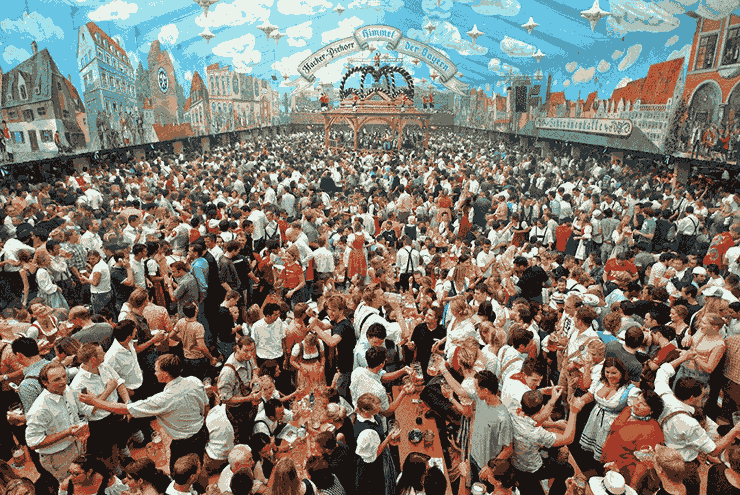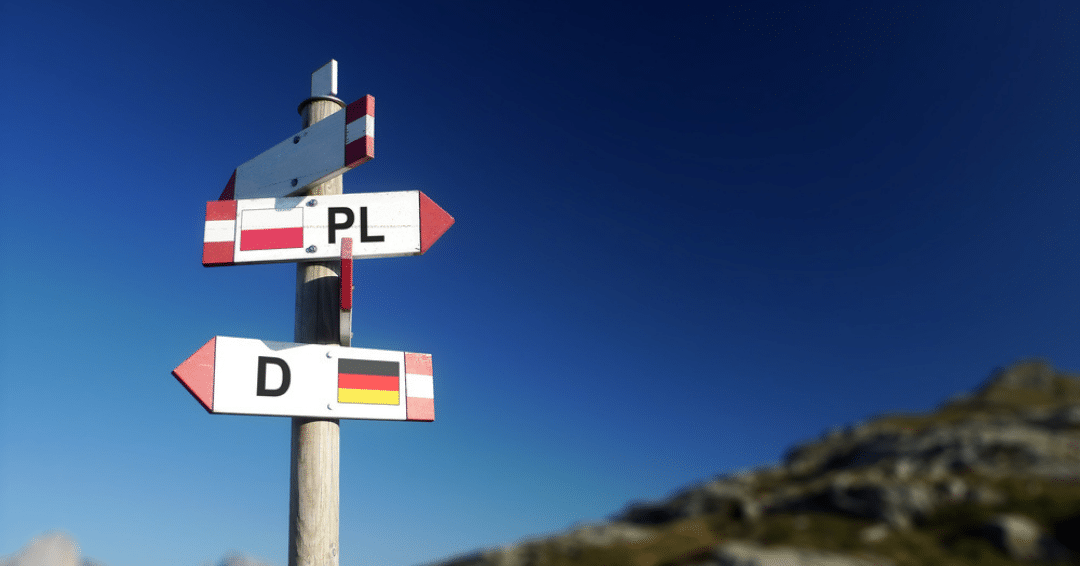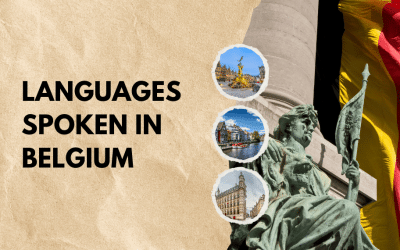German vs Polish: There is a common misconception that Polish and German are very similar languages. Is it due to the fact that Germany and Poland so closely situated? Or does it have to do with the migration between these two countries during the Second World War?
The truth is that the German and Polish languages have almost nothing in common. They belong to different language subfamilies. What’s more, they have developed independently from each other.
This is why it would be quite complicated to compare them. Nevertheless, this is exactly what we are going to do in this blog!
1. Language Family, Regions, and Speakers
Both German and Polish language are Indo-European languages. German belongs to the subfamily of the Germanic languages (together with English and the Scandinavian languages) while Polish is a Slavic language, which means it is similar to Czech and Russian.
Also Read: Slavic languages – Definition, List, Origin, History, Similarities
German is spoken by nearly 130 million people worldwide. It is recognized as an official language in Germany, Austria, Belgium, Lichtenstein, Luxemburg, and Switzerland.
Moreover, about 7.5 million German native speakers scattered in 42 countries around the world. There are huge German communities in the USA, Russia, Romania, and, surprisingly, as far as Namibia.
There is a German-speaking minority recognized in Poland as well. According to a 2011 national census, there were nearly 150,000 people who declared that they are of German ethnicity.
Also read: Germanic Languages: Origin, Similarities & Differences
Polish, on the other hand, spoken by more than 40 million people and is an official language only in Poland. During the Second World War, many Polish people migrated to other countries.
As a result, today there are Polish communities in the USA, Russia, Israel, Brazil, and Canada.
The biggest Polish speakers’ community is in Germany where a little less than 800,000 Polish speakers live.
Also read: German vs Russian: Which Language Has a Brighter Future?
2. German vs Polish: Pronunciation
Although both German and Polish use the Latin script, pronunciation-wise these two languages are very different.

It should point out that while Polish and German use the Latin alphabet, they have adapted it to the languages’ sound systems.
Since these languages have very distinct sound inventories, have developed new letters/ symbols to denote these particular sounds.

German vs Polish language: As you can see from table 1 above, Both share some letters and sounds, however, there is a lot of variation in terms of the letters and their pronunciation.
Take, for instance, the so-called Umlaut Üü. Pronounced as a long /Ju/ sound as in Jupiter. However, this particular sound does not exist in Polish.
On the other hand, the sound denoted by Ćć in Polish does not correspond to any letter from the German alphabet.
Nevertheless, this sound is usually represented by a combination of consonants – tsch (pronounced like ch in chat).

Also read: German eCommerce: A Guide To Translation and Localization
In terms of stress, the German language has an irregular stress pattern while in Polish words’ stress tends to fall on the penultimate (or next to the last) syllable.
What’s more, these two languages share a common pattern called consonant clusters. These are sequences of 3,4 or more consonants one after the other.
While in German it is pretty common to see 3-4 consonants clustered (e.g. Tschüss! which means Bye!), in Polish, it is even more extreme.
For instance, the Polish word for beetle chrząszcz. As you can see there two consonant clusters of 4 consonants each.
For a better representation of this phenomenon of consonant clusters in Polish have a look at this tongue twister: Czy rak trzyma w szczypcach strzęp szczawiu czy trzy części trzciny? (meaning: Does the crab hold in its claws a piece of sorrel, or three pieces of a reed?).
Overall, we can conclude that the only similarity between German and Polish language is the fact that they have adapted the Latin writing system to their sound inventory. Other than that, these two languages have very different pronunciations.
Also read: What Are The Most Spoken Languages in Eastern Europe?
3. German vs Polish: Grammar
There are a few aspects of the grammar of these two languages that might trick you into thinking that German and Polish are closely related, but don’t let yourself be fooled.
There are two main grammatical aspects in which Polish and German bear slight resemblance:
- Neutral, feminine, and masculine gendered nouns
- The use of cases to denote the role of the nouns in the sentence
Well, these similarities, however, are just a sheer coincidence rather than denoting certain correspondences between the languages.
In fact, if we have a closer look, we will find out that there much sharper contrasts between the two:
- German has 4 cases (nominative, accusative, genitive, and dative), while Polish – 7 (nominative, genitive, dative, accusative, instrumental, locative, and vocative)
- German uses definite and indefinite articles (such as the, a, an in English) while in Polish such don’t even exist.
- Polish has 3 tenses (past, present, future) while German has 6 (present, present perfect, past, past perfect, future, and future perfect)
- German has a formal (Sie) and informal way (Du) to address a person while in Polish one should consider politeness level, gender, and number in order to choose the correct pronoun. For instance, the pan is used to address a man while pani refers to a woman (regardless of whether she is married or not); państwo is a plural form that is used to refer to a man and a woman in a mixed group.
All these grammatical contrasts between German and Polish very well prove the point that these two languages are, indeed, very different. are on a surface level.
Also read: Things To Consider While Localizing For The German Market
4. German vs Polish: Vocabulary
As you might already expect, German and Polish do not share much in common even in terms of vocabulary.
There are quite a few German loan words in Polish, but still, they have undergone a metamorphose and today it is rather hard to recognize that they were, in fact, loaned.
For instance, the word for mayor in Polish burmistrz stems from the German word Bürgermeister.
The number of Polish loan words in German is even less significant and almost non-existent.
Still, it should be highlighted that some very common German words such as Grenze (meaning border) and Gurke (meaning cucumber) stem from the Polish words with identical meanings –granica and ogorek respectively.
Also read: eCommerce Localization Guide For Selling Across Borders
Connect With Your Customers In Their Native Languages
Milestone helps you seamlessly translate content & localize your website, products, and services for more reach, better conversions, and greater sales. Get in touch with us for a special discount.
Regarding mutual intelligibility, you might have already guessed it, German and Polish are definitely not mutually intelligible. If you are still not convinced, have a look at the following sentences:
- Alle Menschen sind frei und gleich an Würde und Rechten geboren. Sie sind mit Vernunft und Gewissen begabt und sollen einander im Geist der Brüderlichkeit begegnen.
- Wszyscy ludzie rodzą się wolni i równi pod względem swej godności i swych praw. Są oni obdarzeni rozumem i sumieniem i powinni postępować wobec innych w duchu braterstwa.
The first sentence in German while the second one is in Polish. These two examples perfectly illustrate the stark contrast between these two unrelated languages.
Also Read: German eCommerce: A Guide to Translation and Localization
5. German culture vs Polish culture
German people are usually notorious for their discipline and punctuality.
However, there is so much more that defines the German culture and, indeed, makes it a lot different from the traditions and way of living of the Polish people.
What’s comes first to my mind is the fact that in Polish culture people celebrate not only birthdays but also name days.
For instance, the official holiday of Saint Michael is on the 29th of September and thus, everyone called Michael celebrates their name day on this date.
This is a custom which is still existent in parts of Bavaria, but otherwise, it is no longer celebrated in the rest of the German-speaking world.

German people are known for their love of beer. They even have a festival called Oktoberfest on which both German people and tourists can enjoy good beer and tasty food.
The Oktoberfest is visited by 6 million people every year which makes it the biggest festival in the world. Although there are no such massive festivals in Poland, Polish people also have quite a few rather festive celebrations.
One of them is Juwenalia which means “a college student” in Polish. This is a colorful festival which is organized in May before the student exams take place.
During the festival young people wear colorful costumes and parade on the streets. It dates back to the 15th century.
Both German and Polish people are regarded as devout Catholics.
However, for Polish people, religious holidays are more about gathering with their family and friends and enjoying each other’s company than about religion.
What’s more, nowadays more and more young people in Poland and most German-speaking countries do not profess any religion.
In terms of communication, German people are oftentimes perceived as rather distant and direct, or even arrogant. Like most Slavic nations, Polish people appear rather chaotic, loud, and oversensitive.
Also read: Things to Consider When Localizing for the German Market
6. German-Polish relations
The Polish-German relation is very stable, despite being marked by rather difficult history during the Second World War and the years following it. Today Germany and Poland are the main trade partners.
Germany and Poland’s economic relations date back to 1929 when Germany had a 27,3% share of Polish imports and over 31% of Polish exports. In fact, Germany is Poland’s first trading partner since 1938.
Nowadays the economic relations between the two countries remain secure.
Even during the unstable economic situation due to COVID-19 Germany and Poland did not decrease their economic activity.
According to statistics, there 5,000 German businesses operating in the Polish market.

Poland on the other hand is successfully investing in the modernization of its infrastructure (motorways and ports) and its industry.
What’s more, Poland offers a well-educated, motivated workforce as well as attractive taxation rates – the corporate tax rate of 19% is much lower than in Germany.
These two factors coupled with the geographical proximity of the two countries inevitably attract many German investors to Poland.
Poland is also the country with the most German language learners in Europe – over 2 million people in Poland take lessons in German.
Polish, however, is not as popular in Germany. Still, many German schools offer lessons in Polish as a second foreign language.
To Conclude
German vs Polish language are very remotely related languages and thus, we cannot expect them to have numerous characteristics in common.
It is interesting, however, that there are so many cultural and linguistic differences although Germany and Poland are neighboring countries.
What’s more, Poland was a part of the German Reich until the end of the Second World War. Even after that Poland and East Germany were hugely influenced by the Soviet communist regime and established strong relations.
Today, both Poland and Germany as well as other German-speaking countries are part of the EU and greatly contribute to the unification of the European continent.
All these “points of contact” between the languages might mislead you into thinking that German and Polish should have influenced each other, at least to a certain degree.
This blog should have already convinced you that this is not the case!
Also read: Top Translation Companies in the UK: How to Choose the Best One
Connect With Your Customers In Their Native Languages
Milestone helps you seamlessly translate content & localize your website, products, and services for more reach, better conversions, and greater sales. Get in touch with us for a special discount.





